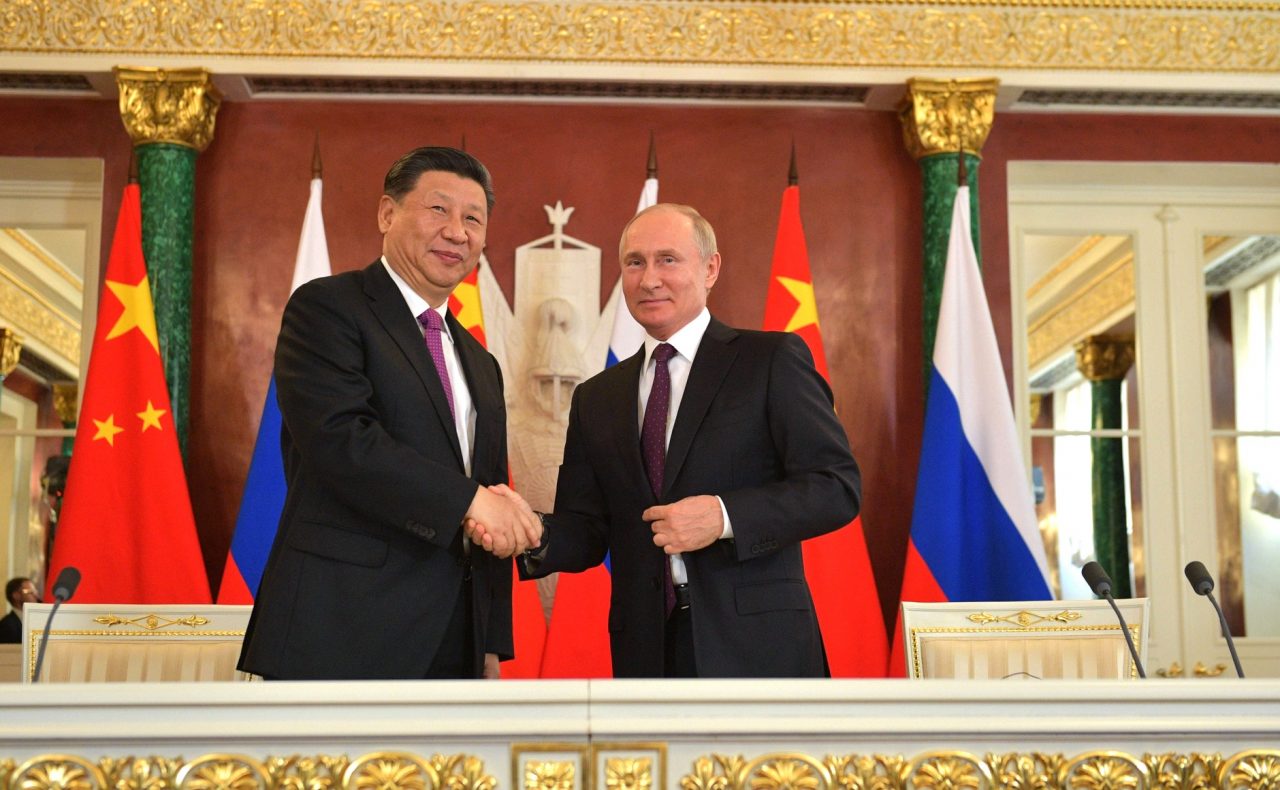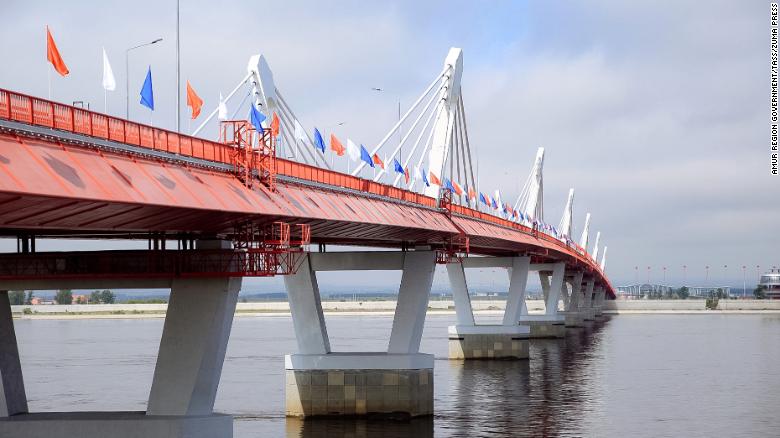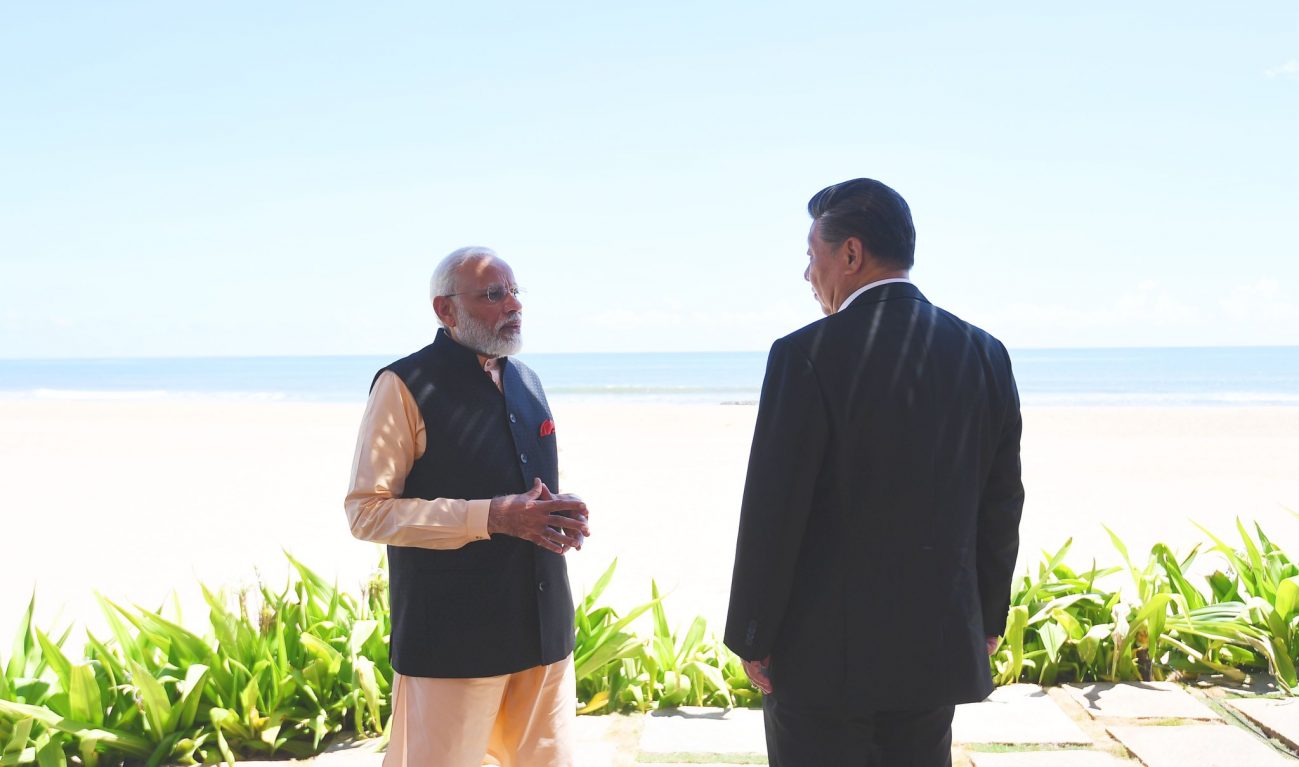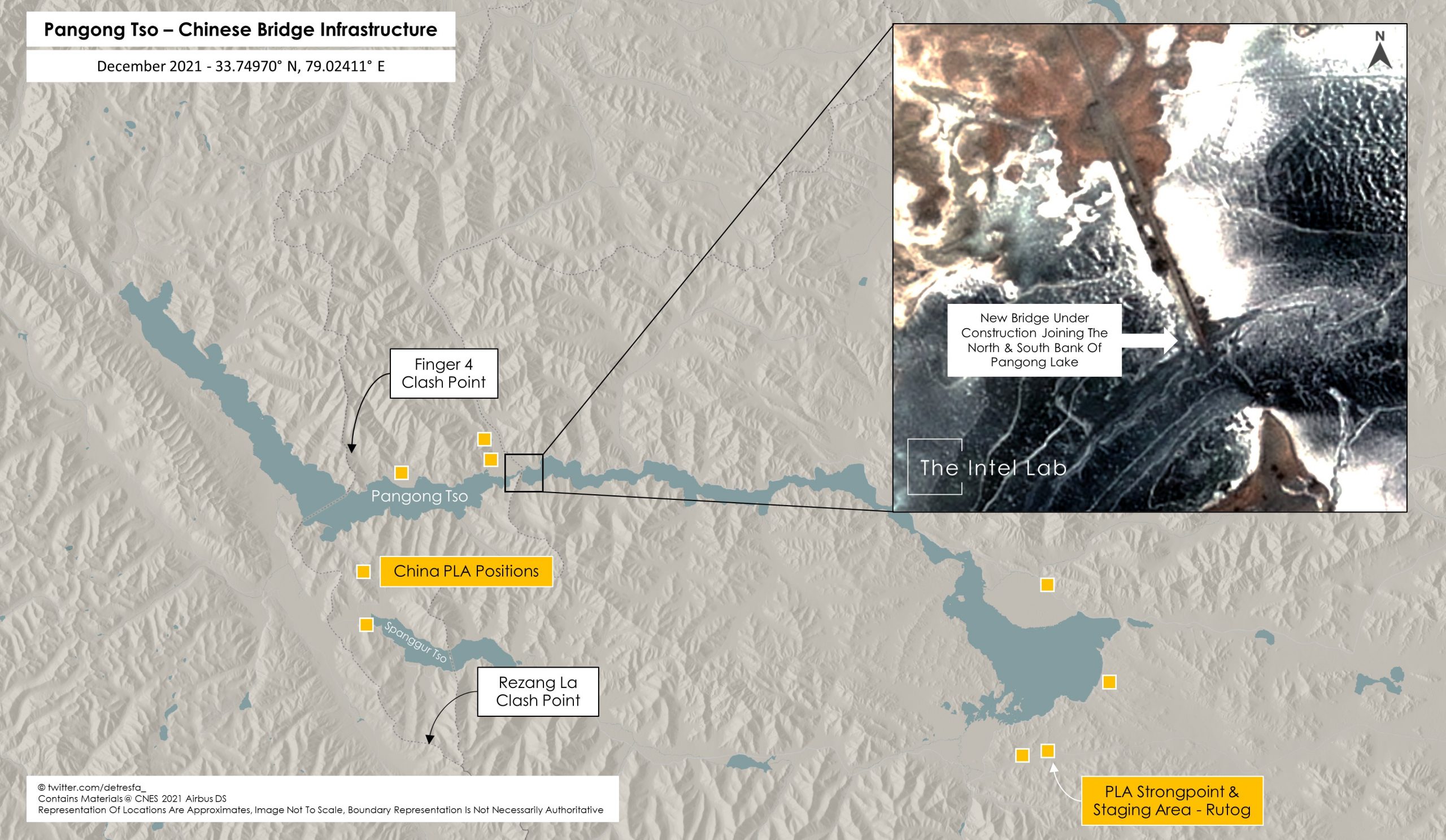Following its invasion of Ukraine, Russia suffered heavy sanctions from the US and its allies and became economically isolated from the rest of the world. Despite this, China, its staunch supporter, appears to be forging new ways to boost the economic partnership between the two countries.
On June 10, a new 1,080 meter-long cross-border road bridge between Russia and China was opened, bolstering trade ties and introducing a new page in Russia-China relations.
The bridge dubbed the first highway over the Amur River (known as the Heilongjiang in China) by state media on both sides linked the east Russian city of Blagoveshchensk with the Chinese city of Heihe.
The inauguration ceremony was extravagant, with rockets trailing multicolored smoke bursting overhead and local officials clapping from the riverbanks. The senior leaders from both sides were streamed in from Moscow and Beijing on colossal television screens for the occasion.
Eight freight trucks from both countries traveled in sequence across the kilometer-long bridge on the first highway journey. Each truck carried two large national flags on either side of their vehicle as they crossed one another.
According to Moscow, the Chinese freighters carried electronics and tires, while the Russian freighters transported soybean oil and sawn timber. Meanwhile, a second crossing, the only railway bridge connecting the countries on the other side of the river, is slated to open soon.
“The Blagoveshchensk-Heihe bridge has special symbolic significance in today’s disunited world. It will become yet another thread of friendship linking the people of Russia and China,” said Yury Trutnev, the Kremlin’s envoy to the Russian Far East.
The project will likely enhance bilateral trade between the two countries as Moscow turns to Beijing for economic assistance. However, in the wake of the western sanctions, it is uncertain how far Beijing can go to assist Moscow.

Timeline & Cost
The construction of the bridge started in late 2016. With a total expenditure of 2.47 billion yuan ($369 million), the complete highway project spans 19.9 kilometers, with 6.5 kilometers within Chinese territory and 13.4 kilometers in Russia. Once fully operational, Moscow anticipates clearing four million tonnes of cargo and two million passengers yearly.
The relations between these two countries have expanded under Russian President Vladimir Putin and Chinese President Xi Jinping, with Moscow announcing this spring that it wants to increase commerce to $200 billion by 2024, up from a record-breaking $146 billion last year.
“Just recently, Russia and China didn’t have a single bridge across the Amur River, but now they have as many as two bridges … so the trend is clear,” said Artyom Lukin, an associate professor of international relations at the Far Eastern Federal University in Vladivostok.

The bridge’s riverbanks, known as the Amur in Russia and Heilongjiang in China, were historically sensitive and closely monitored areas. An Amur tributary was the subject of a border dispute between the Soviet Union and Communist China in 1969, and territory disputes were not entirely resolved until the 1990s.
“China has always been pushing for more port infrastructure, but Russia was a bit reluctant until recently to build this kind of infrastructure for fear of becoming too dependent on China,” Lukin said.
“But now Russia has no choice,” he added, noting that since Russia annexed Crimea in 2014 and the accompanying Western backlash, Moscow has been “much more open” to Chinese cross-border infrastructure projects.

Bridges Near India Border
While China is rapidly extending its infrastructure, building bridges to increase connectivity with other nations as part of the BRI initiative, India is a country along whose border China is also building bridges, but in an adversarial manner.
China is reportedly building a “larger” second bridge in a territory controlled by it around the strategically significant Pangong Tso lake in eastern Ladakh. Experts believe this could help the Chinese military mobilize regional soldiers more rapidly.
According to reports, China has recently completed the construction of the first bridge in the area. China has been aiming to bolster its military infrastructure after Indian troops conquered critical strategic heights on the southern bank of Pangong Lake in August 2020.

The second bridge will potentially have a width of 10 meters and a length of 450 meters. The new bridge is being constructed concurrently from both banks, and its dimensions indicate that it can accommodate larger and heavier vehicles, such as tanks and armored vehicles.
The clash in eastern Ladakh began on May 4-5, 2020. India has insisted on restoring the status quo previous to the standoff.
So far, India and China have undertaken 15 rounds of military talks to resolve the dispute over eastern Ladakh. As a consequence of the negotiations, the two parties concluded the disengagement process on the north and south banks of Pangong Lake and in the Gogra area last year.
The relationship between China and India is highly complex. Both countries have close relations with Russia and are members of the BRICS, frequently considered a rival to QUAD.
While Russia is eager to form a bloc with India and China against the West, the border conflict between New Delhi and Beijing appears to be a massive impediment.
- Contact the author at ashishmichel@gmail.com
- Follow EurAsian Times on Google News




